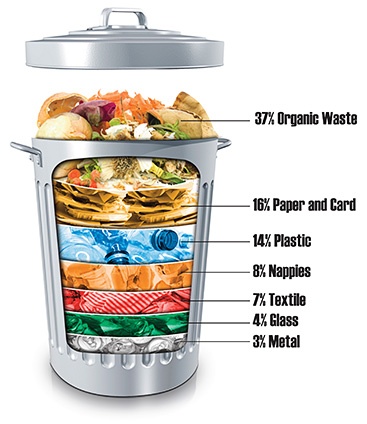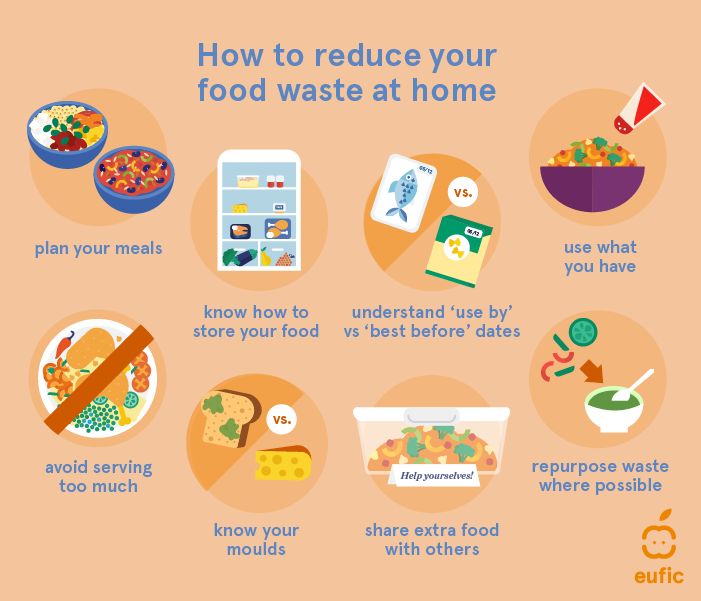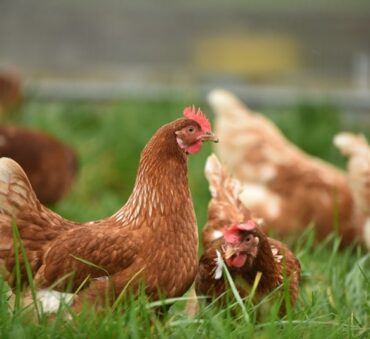Every day, we throw an alarming amount of household food waste worldwide. It is a phenomenon so commonplace that we seldom give it a second thought, and yet the problem of food waste carries consequences far beyond what meets the eye. The discarded apple core, the half-eaten sandwich, the forgotten leftovers – they collectively form a substantial mountain of waste that weighs heavily on our environment, economy, and social equity.
This blog invites you to join an essential conversation about household food waste, where we unpack the scale of this issue, discuss its implications, and explore tangible, effective strategies on how to reduce food waste at home.
What is Household Food Waste?
Household food waste comprises food bought for home consumption that is either left uneaten or discarded. It cuts across a broad spectrum, ranging from fruits, vegetables, meat, and dairy products to leftovers. Typically, it ends up in the trash due to reasons such as spoilage, over-preparation, or exceeding expiration dates.
The Causes of Household Food Waste
Several factors contribute to household food waste, including:
Lack of awareness and education
Often, households are unaware of the far-reaching implications of food waste. This lack of awareness can lead to apathy, resulting in wasteful practices continuing unchallenged. Educational gaps also play a role in this, such as not knowing how to store food properly or how to utilize leftovers creatively.
Misinterpretation of expiration dates
Expiration dates on food products often cause confusion, leading to unnecessary disposal. Many consumers mistake ‘use by’, ‘best by’, and ‘sell by’ dates as definitive indicators of food safety, whereas they primarily signify peak quality.
Over-purchasing and over-preparation
The proclivity to buy and prepare more food than necessary results in increased leftovers, which often go uneaten and contribute to food waste. This behavior can stem from a variety of factors, including inaccurate portion estimation and impulse buying.
Inappropriate food storage
Improper storage methods can accelerate food spoilage, leading to food being thrown away before being consumed. Lack of knowledge of optimum storage conditions and procedures exacerbates this problem.
The Dangers of Household Food Waste
The issue of food waste at the household level is notably significant because it represents the final link in this chain. Here, the wastage of food entails not just the loss of the food item itself but also all the resources—water, energy, labor, and time—that went into growing, processing, transporting, and preparing it.
The environmental impact
The environmental impact of food waste is twofold. First, the wasted resources, such as water, energy, and land that went into producing, packaging, and transporting unconsumed food are considerable. Second, when food waste ends up in landfills, it anaerobically breakdown and generates methane, a major greenhouse gas contributing to climate change.
The Social Impact
Socially, household food waste exacerbates the issue of food insecurity. Despite our world producing more than enough food to feed its entire population, millions of people face hunger and malnutrition. The irony that food surplus coexists with food scarcity highlights the urgent need to address food waste.
The scale of food waste in the United States
- Approximately 103 million tons of food are wasted every year. That’s estimated to be almost 40 percent of the entire US food supply. [Source]
- The average household wastes 31.9% of the food that its members obtain each year. [Source]
- The amount of food wasted has an approximate value of $408 billion each year, with an average of $1,600 per household. [Source]
- Food waste causes approximately 8% of all greenhouse gas emissions. [Source]
- The production of wasted food in the United States is equivalent to the greenhouse emissions of 37 million cars. [Source]
- Meat, seafood, fruits, and vegetables were found to be the leading categories of waste, generating almost 70% of the daily per capita cost of total food waste. [Source]

The Importance of Reducing Food Waste at Home
Reducing food waste at the household level is not just an individual or family issue. It is an integral part of the broader sustainability goals that aim to conserve resources, combat climate change, and achieve food security.
Efficient Use of Resources
When we waste food, we’re not just wasting the food itself but also the resources that went into producing it. This includes water for irrigation, land for planting, energy for production and transportation, and inputs like fertilizers and pesticides. By minimizing food waste, households can contribute to more efficient and sustainable use of these valuable resources.
Climate Change Mitigation
Food waste decomposing in landfills produces methane, a potent greenhouse gas. When households reduce food waste, they contribute to lower methane emissions, which helps in the fight against climate change. Moreover, by not wasting food, we avoid the carbon dioxide emissions associated with food production, transportation, and storage.
Biodiversity Protection
Minimizing food waste also has a profound impact on its effect on the environment. Much of the world’s deforestation occurs to make way for agriculture. By wasting less food, we can reduce the demand for excessive food production and thus reduce the need for additional agricultural lands. This will help safeguard natural habitats and protect the diverse species that inhabit them.
Financial and Social Benefits
On a more individual level, reducing food waste also contributes to significant financial savings for households. With careful planning and responsible consumption habits, families can significantly reduce their grocery expenses. If we can redirect the surplus food that usually goes to waste, we can address issues of food insecurity, contributing to social sustainability.
Strategies for Reducing Food Waste at Home
The home is the starting point for effective waste reduction. With small but meaningful changes to our habits and routines, we can make a significant impact.
Tips on thoughtful shopping
We often fall into the trap of buying more food than we need, leading to unnecessary waste. A little thought before shopping can go a long way in preventing this.
- Plan meals in advance: Before shopping, create a menu for the week. This will help in buying only what is necessary.
- Make a detailed shopping list: Having a shopping list not only saves time but also prevents impulse buys.
- Buy in bulk only when necessary: large quantities often lead to waste. Buy smaller portions of perishable items and, if possible, only buy bulk items that you use regularly and/or have a long shelf-life.
- Purchase loose items, like fruits and vegetables, rather than pre-packaged options. This allows you to buy only what you need.
Understanding and using expiration dates correctly
Expiration dates on food items can be confusing but understanding them is another key to preventing food waste.
- Distinguish between “Use By” and “Best By”: “Use By” is about safety, while “Best By” refers to quality. Foods past their “Best By” date may still be safe to consume.
- Use your senses to evaluate food quality. Often, products are still safe to consume after their best-by date. However, if food looks, smells, or tastes off, it’s safer to discard it regardless of the expiration date.
- Educate yourself: Understand what different food labels mean to make informed decisions.
Proper Food Storage and Preservation
Storing food correctly is vital to prolonging its freshness and reducing waste.
- Store in airtight containers: Exposure to air can spoil food faster. Use airtight containers whenever possible.
- Regulate refrigerator temperature: Keep your refrigerator at the right temperature to preserve food longer.
- Store fruits and vegetables correctly. Some produce does better outside the refrigerator.
- Utilize your freezer whenever possible. Most foods can be frozen for later use.
- Consider canning, pickling, and drying: These preservation methods can keep food fresh for an extended period.
Mindful Consumption and Portion Control
Eating mindfully and controlling portion sizes can also help reduce waste.
- Prepare and serve smaller portions to avoid leftovers.
- Savor your food and take the time to enjoy it. This way, you allow your body to register that you are full before you overeat.
- Avoid serving buffet-style: Serving buffet-style can encourage overeating and lead to waste.
- Understand serving sizes and adjust your cooking accordingly.
Innovative recipes and ideas for using leftovers
Leftovers can be a source of culinary creativity instead of waste. Here’s how you can maximize your leftovers:
- Find and learn recipes specifically designed for leftovers, such as frittatas or stews.
- Repurpose leftovers into new meals. Roast vegetables can become a soup, or yesterday’s rice can become today’s fried rice.
- Create stock: Use leftover bones and vegetable scraps to create a flavorful stock.

The Role of Community Involvement in Household Food Waste Prevention
Community-level intervention can be an extremely effective method for preventing household food waste. These initiatives often capitalize on the power of localized action and the strength of community networks.
Food Sharing Initiatives
Food-sharing initiatives are one of the many ways communities can take part in food waste prevention. The concept is simple yet powerful: connect those with surplus food to those who need it. This is typically achieved through platforms such as food banks, community fridges, and food-sharing apps. For example, the OLIO app, a worldwide initiative, connects neighbors and local businesses so surplus food can be shared, not thrown away.
Educational Campaigns
Raising awareness and educating the community about the impact of food waste can dramatically influence individual behavior. Campaigns like Love Food, Hate Waste and Save the Food provide great practical tips on meal planning, correct storage, understanding date labels, and using leftovers, all with the goal of reducing household food waste.
Composting and Recycling Programs
Composting programs are a great solution for managing food waste. Not only does this turn waste into a valuable resource (compost), but it also mitigates the environmental harm associated with food waste. These programs can operate at various scales – from a group of neighbors collectively composting to city-wide initiatives that collect and compost organic waste.
Policy Advocacy
Communities can also play a role in advocating for better public policies related to food waste. Ranging from pushing for better food labeling practices and lobbying for waste reduction incentives for businesses, to advocating for comprehensive organic waste management programs.
Conclusion
Food waste is an issue that affects us all and is something that we at Shapiro are passionate about addressing head-on. Recognizing that each one of us has a role to play in combating this global challenge, “we strive to promote conscious consumption and responsible recycling in food waste management. Through our collective efforts, we can mitigate the environmental and social consequences of food waste, contribute to a more sustainable future, and foster a culture where every meal matters.
Frequently Asked Questions
Food waste has both direct and indirect impacts on the environment. Directly, it contributes to landfill mass and produces harmful greenhouse gases as it decomposes – particularly methane. Indirectly, wasted food represents a waste of the resources—such as water, energy, and land—that were used to produce, package, and transport that food. Economically, wasted food is also wasted money.
Fruits and vegetables are the most commonly wasted foods in households, largely due to their perishability. Additionally, bread and baked goods, dairy products, and meat are often wasted due to over-purchasing, improper storage, or misunderstanding of expiration dates.
Reduction of household food waste can be achieved through proper meal planning, understanding “best before” dates, correct food storage, and portion control. Additionally, food waste can be minimized by using leftovers creatively, composting food scraps, and donating excess food where possible.
The “best before” date is not a safety date, but rather the manufacturer’s estimate of when the product will no longer be at peak quality. Many foods are perfectly safe to eat after this date, though they may not taste as fresh. Smell, look, and taste can often be better indicators of whether food is still good to eat.
Reducing food waste helps to limit greenhouse gas emissions from food production and decomposition, decrease deforestation for agricultural use, and conserve water and other resources.
Baily Ramsey, an accomplished marketing specialist, brings a unique blend of anthropological insight and marketing finesse to the digital landscape. Specializing in educational content creation, she creates content for various industries, with a particular interest in environmental initiatives.



